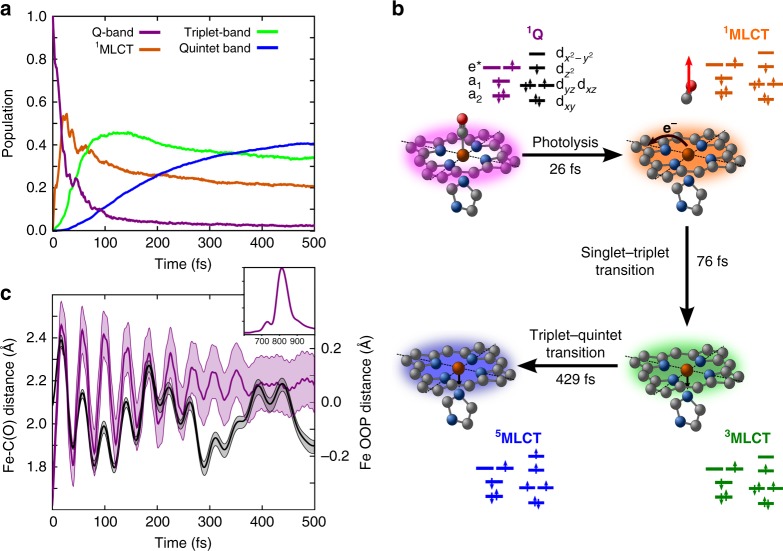Fig. 1.
Photodynamics of photolysis and spin-crossover. Quantum photodynamics of heme–CO complex during the first 0.5 ps, with initial conditions averaged over 10 molecular dynamics snapshots. a Evolution of diabatic populations for states 1Q (magenta), 1MLCT (orange), triplet band (green) and quintet band (blue). The 1Q population rapidly decays giving rise to 1MLCT population dominating by 75 fs, at which point the triplet population increases. The quintet population builds up more slowly, and evolves into the dominant state at around 350 fs. b Schematic representation of the reaction mechanism and interpretation in terms of time constants. Upon initial excitation to the Q-band, the metal-to-ligand charge transfer (MLCT) state is populated in ∼25 fs. In a second step, the system relaxes to the triplet (∼75 fs) and to the lowest quintet state (∼430 fs). Black arrows indicate the direction of the electron transfer and the main nuclear motions. c Evolution of the Fe–C(O) distance (magenta, left axis) and the Fe out-of-plane distance (black, right axis). Large amplitude motions are observed with a period of oscillation of 40 fs. The amplitude of oscillation is initially 0.9 Å and converges towards a value of 2.2 Å. At this distance, the CO is essentially photolyzed. The standard deviation of these geometric values is shown as a shaded area. In the inset, the Fourier transform of the Fe–C(O) oscillations is shown (in cm−1)

